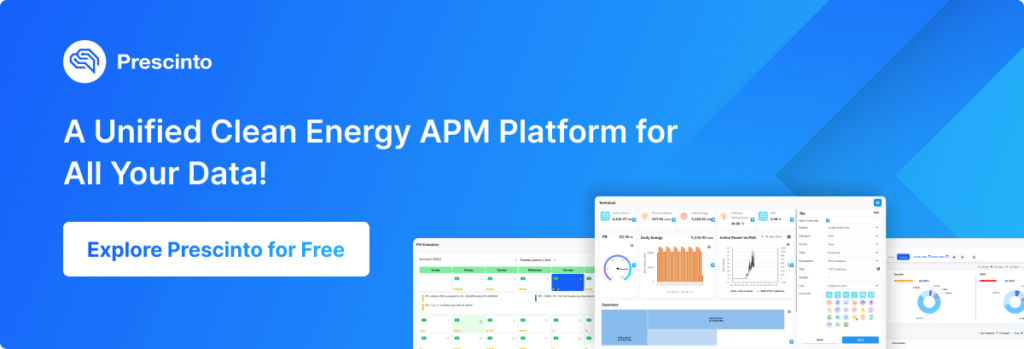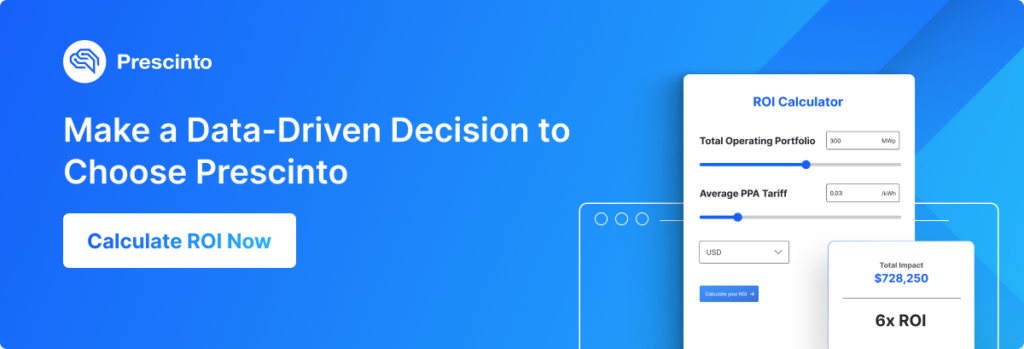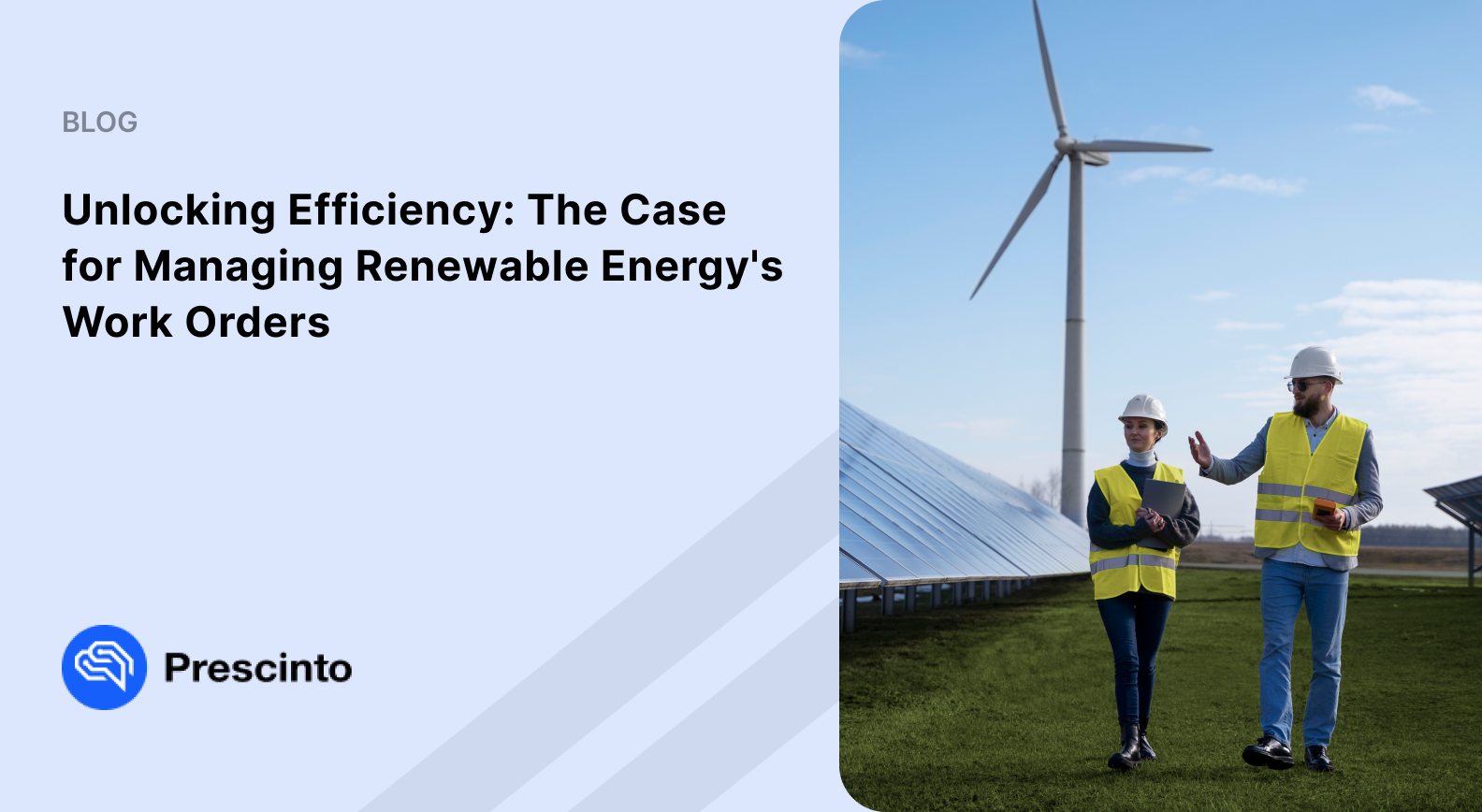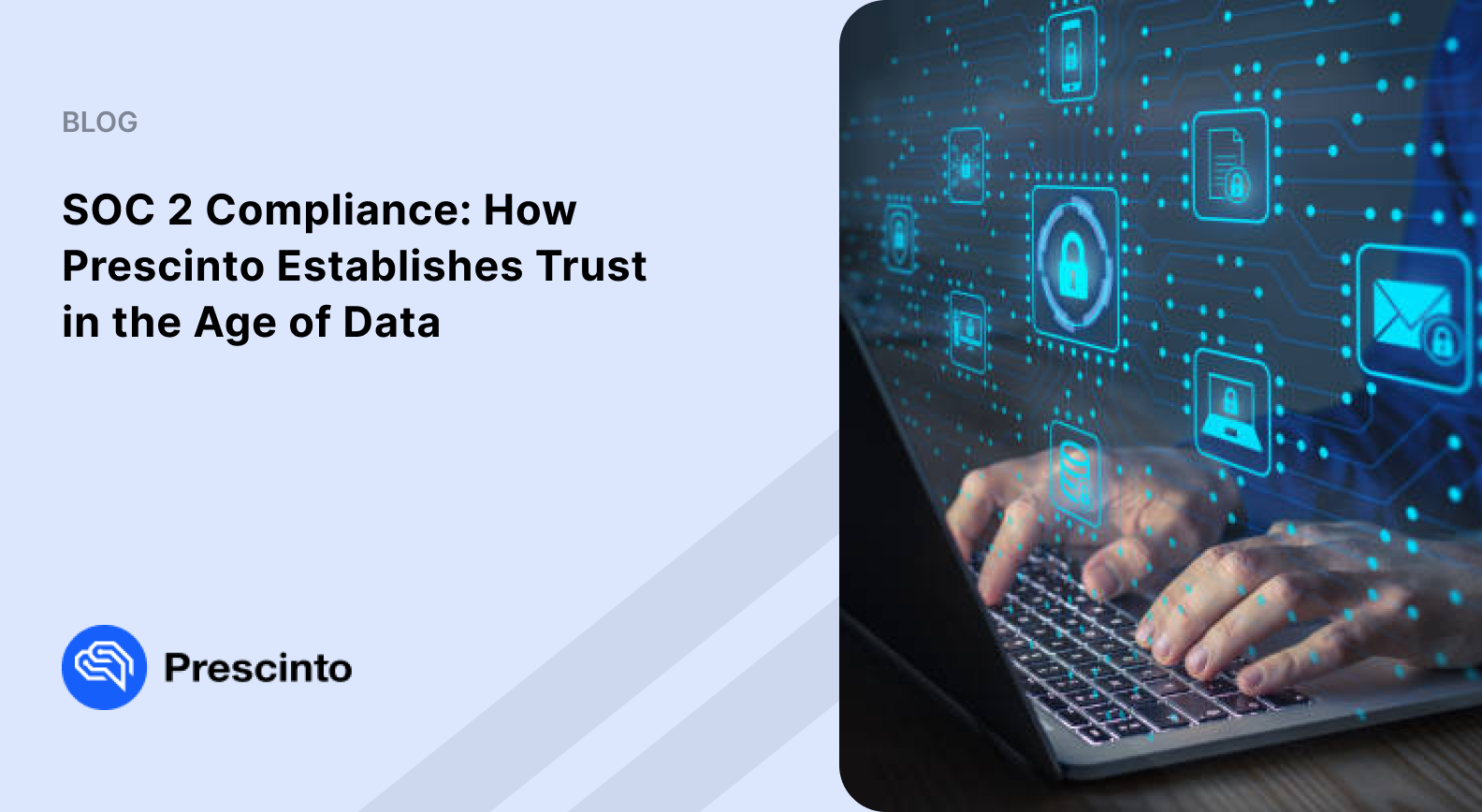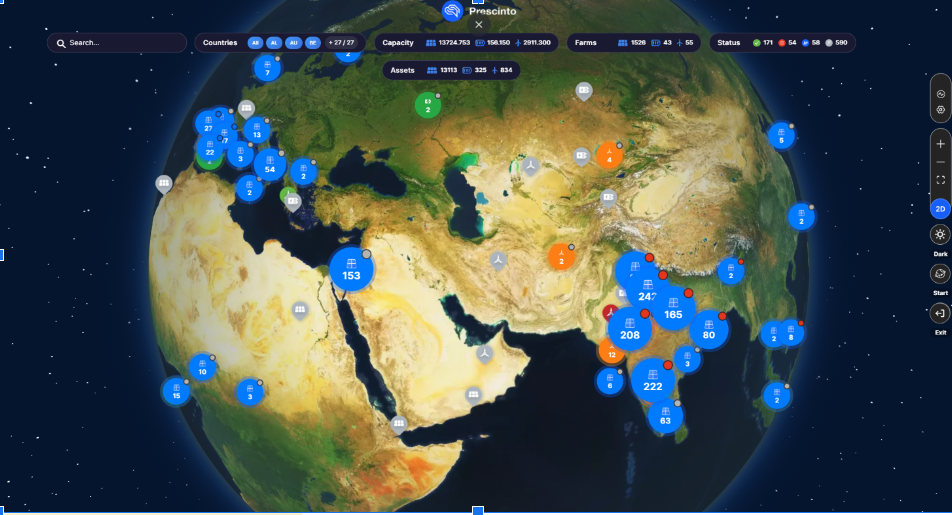From Chaos to Control: Centralizing Data from Varied Data Loggers
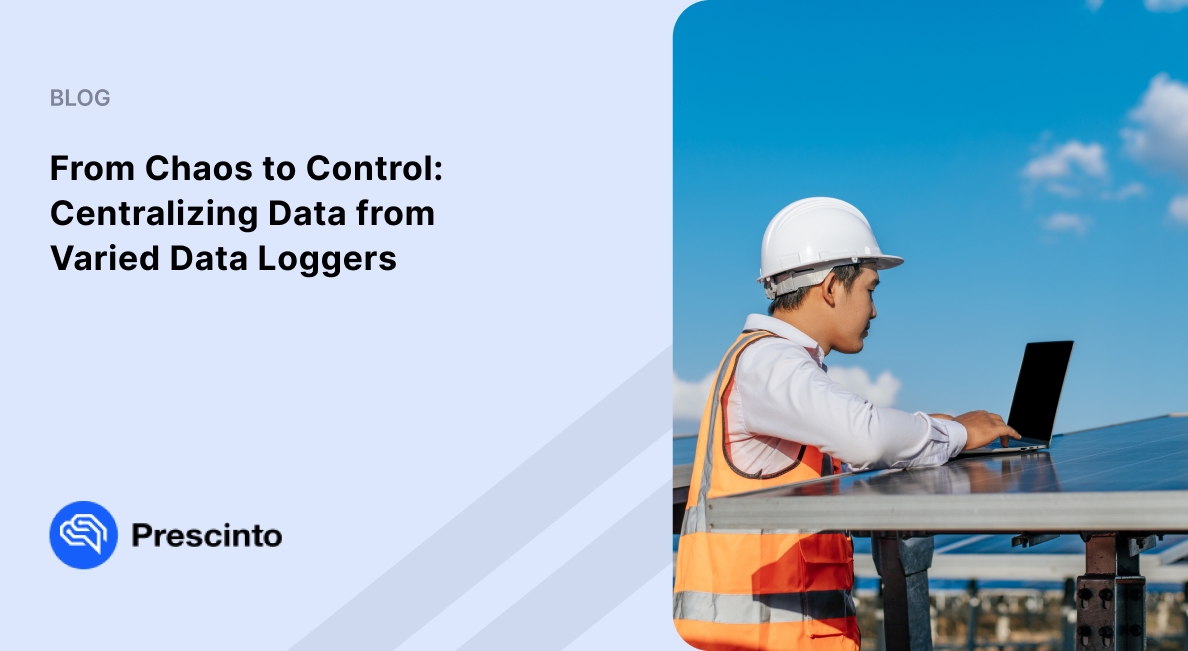
- April 4, 2024
- prescinto
Centralizing Data from Diverse Data Loggers to Manage Distributed Assets
In the domain of sustainable energy, the proliferation of solar installations has become increasingly evident, catering to diverse applications in the residential, commercial, and industrial sectors. However, ensuring the optimal performance of these solar plants relies heavily on precise data collection and analysis. Serving as the backbone of this operation are data loggers, acting as central processing units for monitoring and reporting, thereby facilitating efficient management of solar energy systems. For a deeper understanding of their role, delve further into the blog.
How to Enhance Solar Power for a Sustainable Future?
Embracing solar power for a sustainable future involves using data loggers to make solar energy systems work better. The data logger software are like smart devices that collect information from different parts of a solar plant, such as solar panels and inverters, and send it to a central place for analysis.
Imagine you have a solar panel on your roof. A solar data logger is like a small computer attached to it, keeping track of how much sunlight the panel gets, how hot it gets, and how much electricity it produces. This information is really important because it helps you know if your solar panel is working well or if there are any problems.
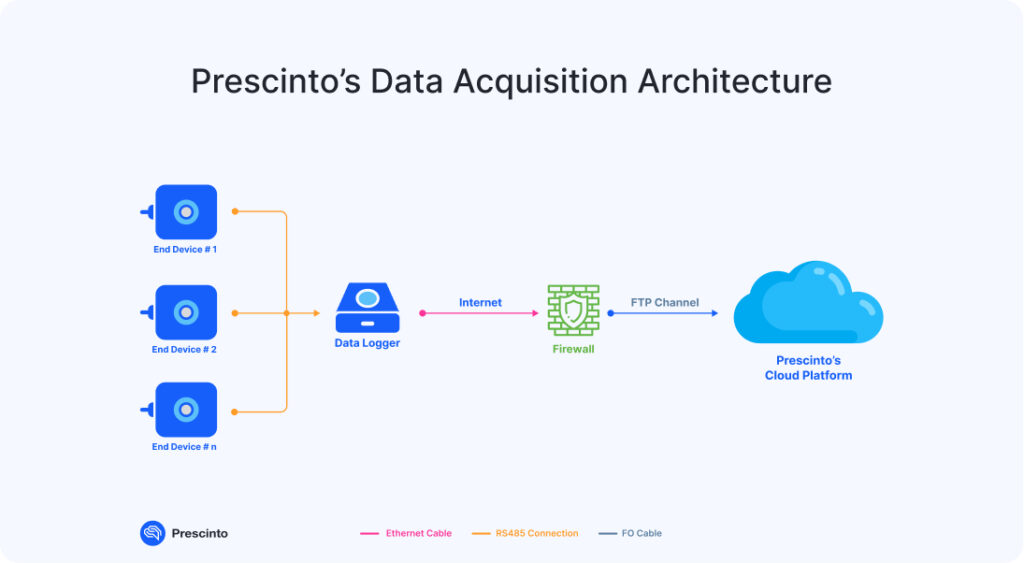
Now, some data loggers can only talk to their own special cloud system, kind of like speaking their own language. But others can share their information with different systems, like sending an email or a text message. This is really useful because it lets you see all your solar panel information in one place, even if you have different types of solar panels or data loggers.
Being able to access this information is a necessity for people who own solar panels or manage them. It helps them keep track of how much money they’re saving, figure out if anything needs fixing, and make sure everything is running smoothly.
So, to embrace solar power for a sustainable future, we need data loggers that can share their information easily and platforms that can bring all this information together in one place. This way, we can make the most out of solar energy and help build a cleaner, greener world for everyone.
Acting as central hubs within solar energy generation systems, data loggers play a crucial role in collecting real-time performance data from various components of the solar plant, including photovoltaic panels, inverters, and sensors. By gathering data on parameters such as solar irradiance, panel temperature, energy production, and system health indicators, the data logger software provides invaluable insights into the operational status of the solar plant.
One of the key challenges in distributed generation systems lies in managing performance data across multiple locations. Here, data loggers step in to centralize and standardize this data, allowing owners and operators to monitor and analyze the performance of numerous installations from a single interface. This centralized approach streamlines management and decision-making processes, enhancing overall system efficiency.
The choice of data logger type significantly impacts the effectiveness of data collection and analysis. Open standard data loggers, supporting industry-standard communication protocols like FTP, MQTT, or HTTP/HTTPS, offer enhanced flexibility and interoperability compared to closed standard loggers. These open standard loggers facilitate seamless integration with third-party monitoring and analytics tools, overcoming challenges posed by heterogeneous data logger fleets and ensuring efficient data management in distributed generation systems.
The Need for Data Centralization in Distributed Generation Systems for Effective Operations
Data centralization is crucial for the efficient management of distributed generation systems, particularly in solar installations. It offers a unified platform to streamline operations, enhance efficiency, and ensure peak performance across multiple sites.
By consolidating data from various equipment into a single interface, owners and operators gain a holistic view of the entire system. This facilitates swift identification of issues, proactive maintenance scheduling, and informed decision-making.
Centralized systems enable comprehensive performance analysis by aggregating data from diverse sources such as panels, inverters, and sensors. This empowers operators to identify trends and implement targeted optimizations to maximize energy production. Moreover, centralized platforms foster enhanced collaboration among stakeholders. They facilitate data sharing and analysis between project teams, O&M providers, and equipment manufacturers, fostering a more integrated approach to system management.
Overcoming Data Diversity: Challenges in Centralizing Solar Plant Operational Data
The ever-expanding landscape of solar energy generation, the role of data loggers in collecting and reporting operational performance data is paramount. However, as the industry matures, it faces a significant hurdle: the proliferation of different makes and models of data loggers. While this diversity fosters innovation, it presents several challenges for owners and operators aiming to centralize data effectively.
- Interoperability Struggles: Each data logger often operates on proprietary protocols, making seamless integration into a centralized data management system difficult. This fragmentation impedes holistic data analysis across solar assets.
- Fragmented Data Silos: Closed-standard data loggers typically push data exclusively to their own cloud platforms, creating isolated pools of information. This fragmented landscape obstructs comprehensive insights into system performance.
- Limited Access Options: Some loggers offer only restricted access methods, hindering flexibility for owners and operators to leverage third-party analytics tools or integrate data into broader management systems.
- Integration Complexity: Integrating data from diverse loggers requires significant effort due to incompatible formats, protocols, and security measures. This complexity delays the deployment of centralized monitoring solutions.
- Maintenance Complexity: Managing a mix of data loggers introduces complexity in maintenance, updates, and troubleshooting. This strains resources and increases operational overhead.
Addressing these challenges requires a concerted effort to standardize data access methods and promote interoperability. Investing in versatile loggers with support for open standards can mitigate complexities associated with managing diverse solar assets. By prioritizing open-access solutions, the industry can streamline data management processes and unlock the full potential of solar energy generation.
Confronting Data Management Challenges: Third-Party Platforms to the Rescue
To overcome the challenges posed by heterogeneous data logger fleets, many solar plant owners and O&M service providers turn to third-party platforms that offer centralized data aggregation and analysis capabilities. These platforms serve as intermediaries between disparate data sources within a solar plant portfolio, allowing stakeholders to access and analyze performance data from a single interface.
One such platform is Prescinto, which specializes in providing comprehensive solutions for monitoring and optimizing the performance of solar plants. Prescinto offers support for a wide range of data loggers, including Acquisuite, SMA, Huawei, Webdyn, Fronius, and others, enabling seamless integration and synchronization of data from diverse sources. Additionally, Prescinto’s compatibility with various FTP formats such as CSV, JSON, XML, and others ensures flexibility in data management and analysis.
By centralizing data from multiple loggers and standardizing data formats, platforms like Prescinto simplify the task of monitoring and managing solar plant performance. Through intuitive dashboards, customizable alerts, and advanced analytics tools, stakeholders can gain actionable insights into their solar assets’ performance, identify areas for improvement, and implement targeted interventions to optimize energy production and maximize ROI.
What Makes Prescinto the Ideal Data Centralization Choice?
Unlike conventional options, Prescinto offers a comprehensive suite of features tailored explicitly for modern digitization needs. Seamless integration with various protocols, including FTP, ensures effortless data transmission, while its compatibility with diverse file formats like CSV, JSON, and XML facilitates versatility in data management. Prescinto can acquire and centralize asset data from solar and wind assets. Moreover, the platform can accommodate data from any OEM or any protocol.
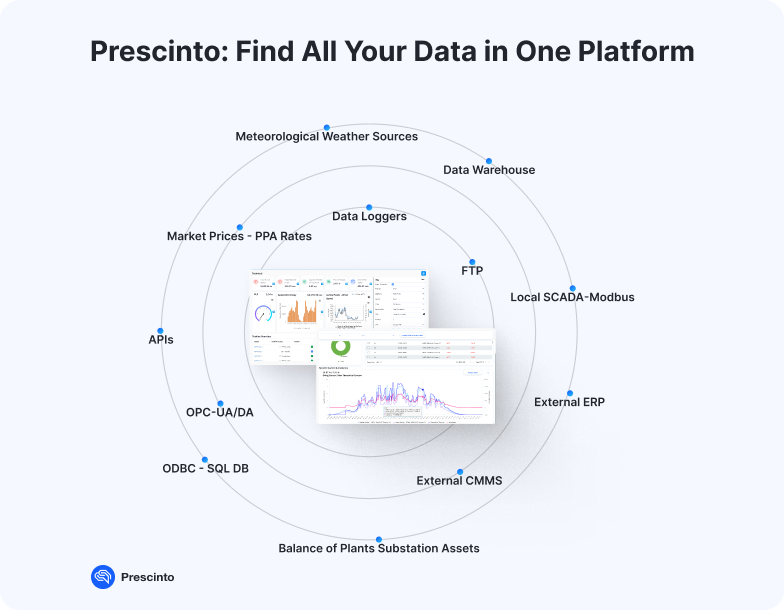
Moreover, Prescinto’s robust security measures guarantee the protection of sensitive data, assuring stakeholders of confidentiality and compliance. Additionally, its scalability empowers businesses to expand their digital footprint without compromising performance. Embracing Prescinto as the cornerstone of your digitization strategy not only ensures a seamless transition into the digital era but also unlocks unparalleled potential for innovation and efficiency in solar energy management.
- Topics: Data loggers, Solar
About Author

